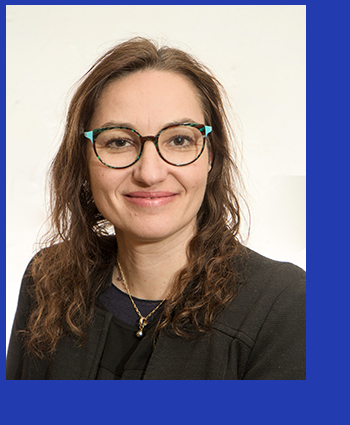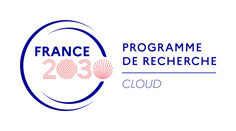On the occasion of International Women’s Rights Day, Patricia Stolf, a teacher-researcher at the Toulouse-Jean Jaurès University on the Blagnac IUT site and University Professor at IRIT since 2022, shares her career path, her inspiring projects and her vision of the place of women in the scientific world.
Can you tell us about your educational and professional background?
After obtaining my scientific baccalaureate, I enrolled at INSA Toulouse. I’ve always been drawn to teaching and research. In my fourth year at INSA, I asked if I could become a teacher-researcher. In parallel with my final year, I took DEA courses in networks and telecommunications and did an internship in a research laboratory, all while teaching at INSA. These experiences confirmed my choice of career path. I obtained my engineering degree in 2001, wrote my thesis at LAAS-CNRS, defended it in 2004 and was hired as a senior lecturer in 2005. Since 2022, I have been a university professor at IRIT and scientific leader of the SEPIA team, as well as head of the IT department at IUT Blagnac.
Why did you choose IT and cloud computing?
I’ve always liked mathematics. At INSA, I hesitated between mathematics and computer science, and eventually chose the latter. At the time, there was a lot of excitement around IT projects, especially with the Y2K problem. My final year placement and dissertation focused on computer clusters and grids, the forerunners of cloud infrastructures. I enjoy applied and practical research, especially in the area of energy conservation, which is an important social and environmental issue.
What are your main research initiatives?
I’ve been involved in a number of European and national projects with a common thread: resource optimisation, whether in terms of application placement or energy consumption in the cloud. For example, I’ve studied heat dissipation in data centres and the integration of renewable energy to reduce the carbon footprint of data centres. I’m currently working on projects such as PEPR Cloud’s CareCloud and E2CC, which aim to make the cloud more sustainable and durable.
What is your vision of the place of women in science and why is it important to promote the feminisation of science?
Science is open to everyone, and what’s important is the creativity and meaning we find in our professional activities. Today, there are very few women in our fields. We receive few applications from women for internships or thesis work, which reduces the pool available for teaching and research positions. It’s crucial to promote the feminisation of science from an early age, through education and awareness-raising, to encourage girls to take an interest in science.
Who are your female role models in your field?
The history of science has shown that many women have had their place. For example, Marie Curie in science, Ada Lovelace, considered to be the first computer programmer, and Radia Perlman, nicknamed the “Mother of the Internet”, have all shown that excellence and innovation have no gender.
What’s your view on the move towards a more egalitarian and inclusive environment in academic institutions and companies?
There have been initiatives in universities and laboratories for several years to create a more inclusive environment. Awareness-raising sessions are held on the topics of equality, parity and disability. For example, we receive training on unconscious bias and gender stereotypes. It seems to me that the same dynamic is happening in companies. These developments take time, but it’s important to continue along this path because diversity in research teams enriches scientific research.
Do you have any advice for a young woman who wants to follow in your footsteps?
I’d definitely do it again. It’s a fascinating profession and I would encourage both men and women to pursue it. Our careers are also built on meetings and opportunities. It’s a very collaborative job, with a lot of partnership projects. Meetings are very important and the job is full of twists and turns.
_A final word_
Patricia Stolf is a perfect example of the ability of women to make their mark in science. Her commitment and her speech in favour of parity testify to the significant contribution of women in research and underline the importance of balanced representation for a more inclusive future.
Publication example : Survey on data centers powered by renewable energies
Her latest publication : Application cases for improving energy consumption in HPC platforms



